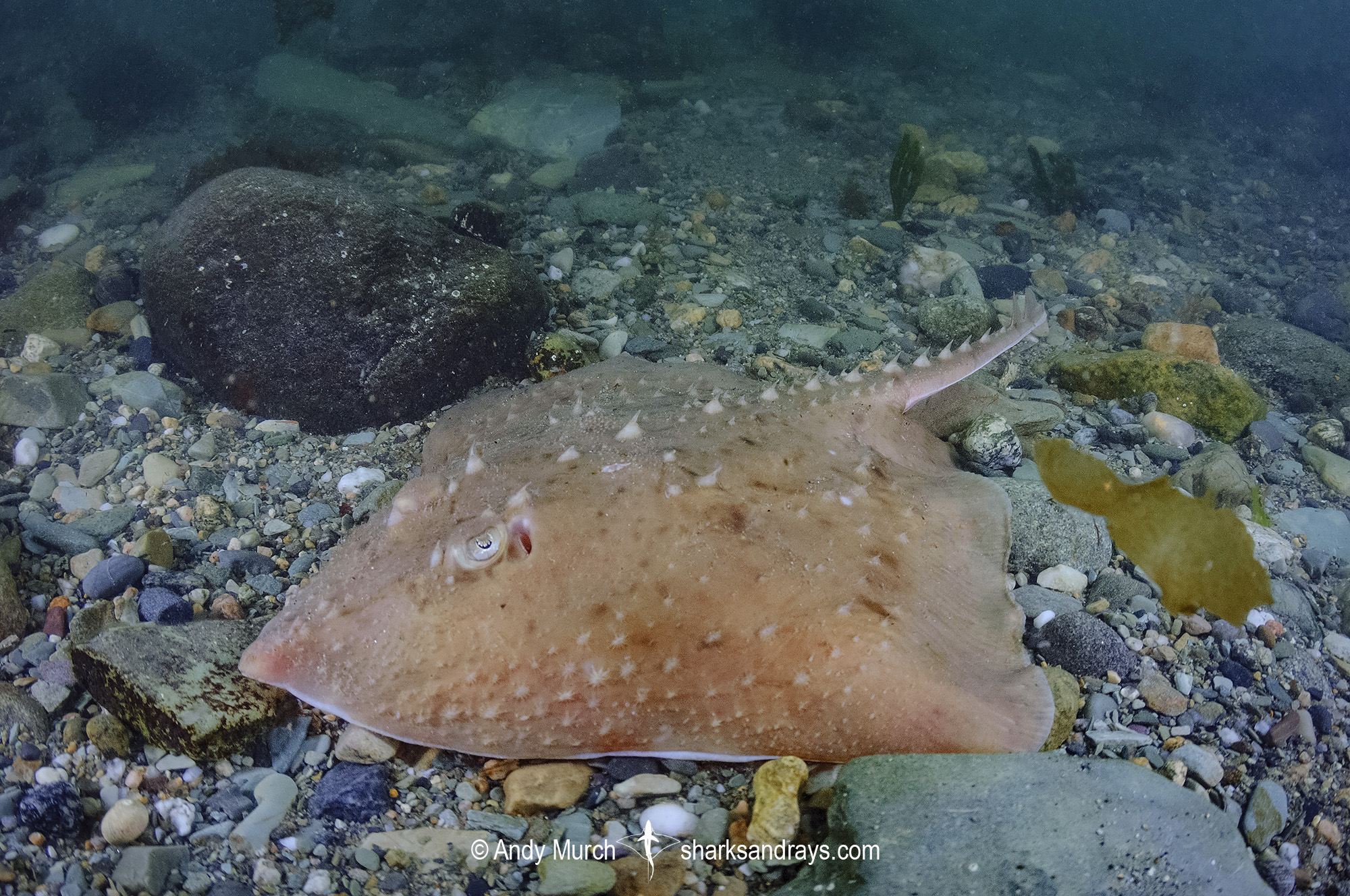The thorny skate (Raja clavata) is a remarkable ray fish species. Its flattened body, large paired pectoral fins and a series of five long dorsal fin spines make it/ them easily recognizable. Predators are also an enemy that the spikes defend against, as they warn any would-be aggressors with these sharp points.
A Bottom-Dwelling Predator
They are a rugose species, and spend much of their existence on the seabed. A flattened body allows it to rest camouflaged against the sandy or mud substrate, waiting lazily for any unwary prey-item to come near enough-go- time!! As soon as it detects the prey, the skate shoots forward and captures its quarry with a nasty set of teeth. Their diet is mostly made up of crustaceans, mollusks and small fish.
An unusual way to build a family
The Thorny skate has a reproduction that is amongst the most weird in terms of internal fertilization. Females lay leathery egg capsules, commonly known as “mermaid’s purses,” that encase eggs. Those capsules are connected to seaweed or other submerged structures and they provide shelter for the developing embryos. The time it may take for an egg to mature can vary depending on the temperature of the water and other environmental factors. When the embryos are older, they emerge as little adults skates.
Conservation Challenges
While the thorny skate has shown adaptability and resiliency in many past studies, it is not immune to other threats. Concern has been raised about overfishing and in particular bottom trawling, which can cause significant damage disturbance to seabed habitats as well as directly target these fish. Habitat degradation, pollution and climate change also potentially add pressures for thorny skates.
Conservation Efforts
In efforts to preserve the thorny skate and other marine species, some conservation measures are being established. These include:
Marine Protected Areas: Designation of locations where fishing or other human activity is restricted and safeguarded to reduce habitat lossSustainable Fishing: Dissemination of sustainable fishing methods such as the introduction of selective gear and establishing a lower catch quota, in order to reduce by-catch affecting marine ecosystems.
Habitat restoration — restoring seagrass beds and coral reefs whose recovery can provide important refuge and foraging regions to a host of marine species that depend on them.
Public Awareness: Raising awareness among public regarding marine conservation and as to the threats faced by same.
Through gaining a better understanding of the ecological function of this species and its life history, we may for once work to protect rather than destroy one another. Responsible fishing, habitat preservation and public education can create a path to long-term thorny skate (and other marine species) survival for future generations.
